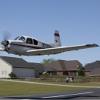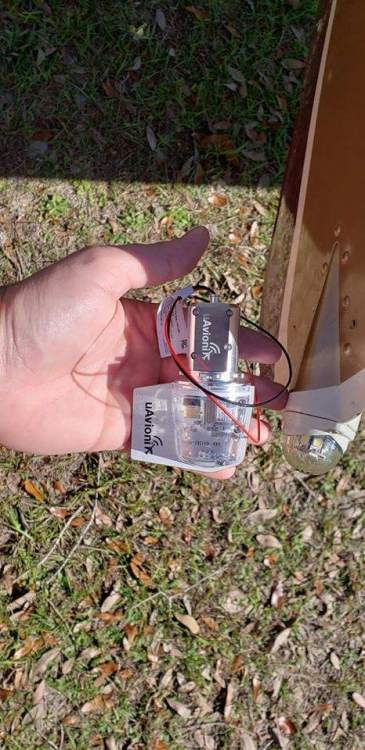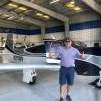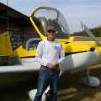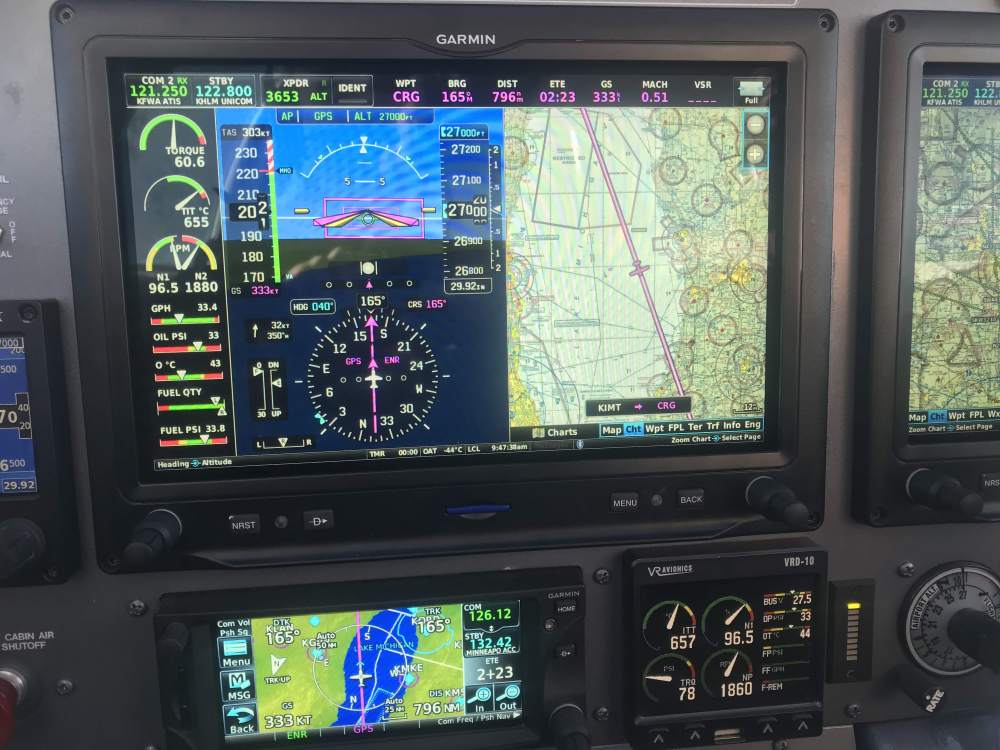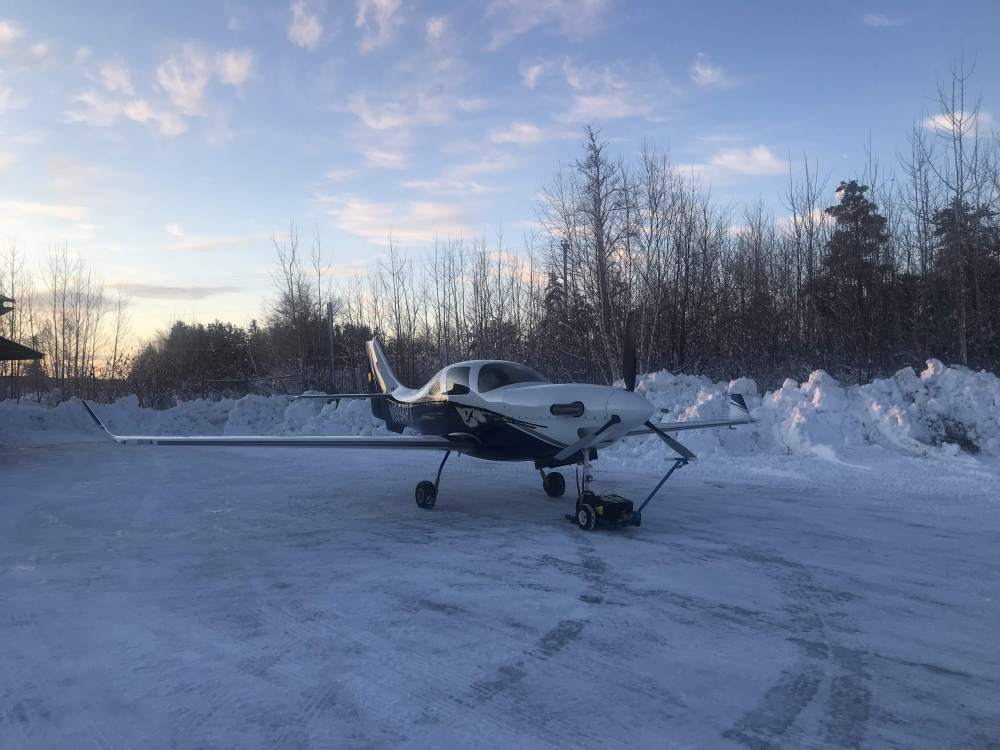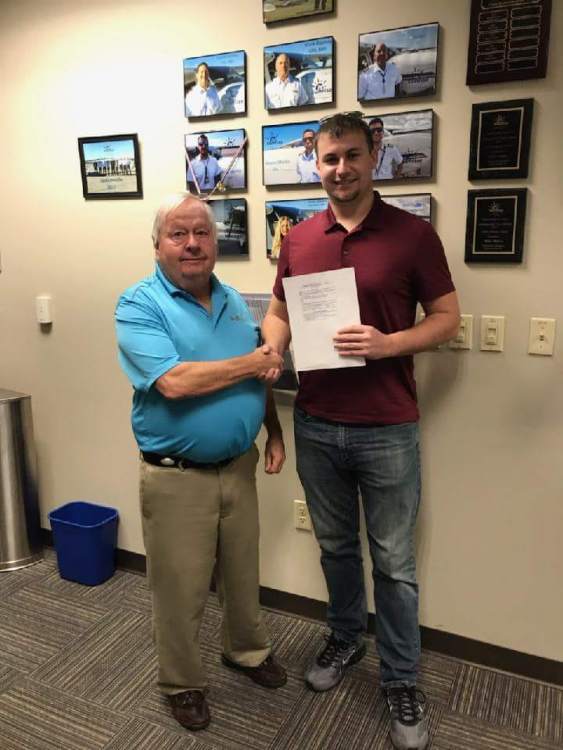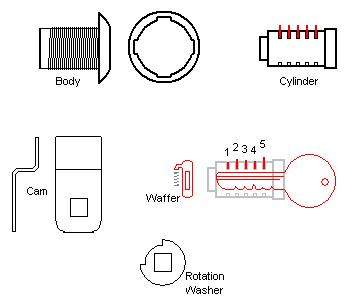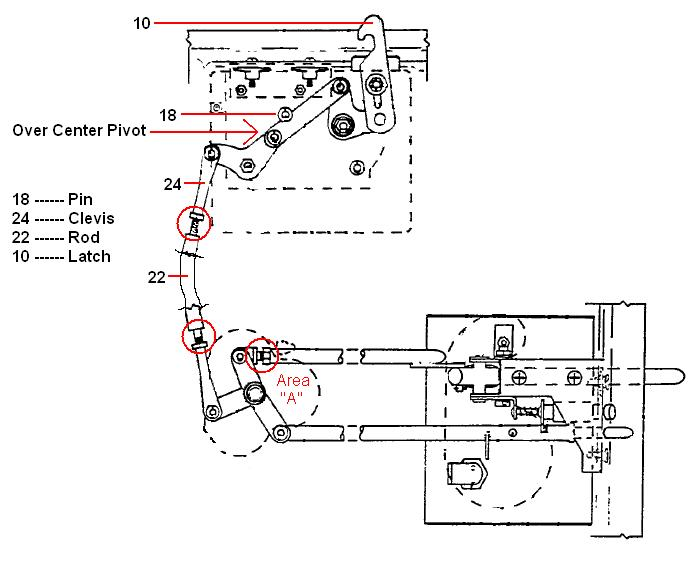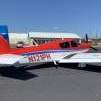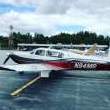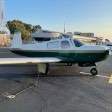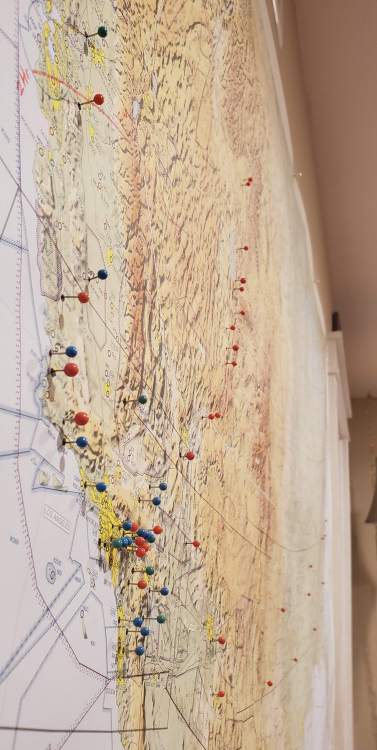Leaderboard
Popular Content
Showing content with the highest reputation on 01/06/2020 in all areas
-
I flew over to Alabama to a small little airport called Eufala. It was hit by a tornado last year and absolutely everything was removed except the runway and lights. The FBO and fuel tanks were in place but all the planes on the ramp were gone and hangar slabs remained. It was sad. But anywho, we went there to visit the nearby Providence Canyon, which is a miniature Grand Canyon in SW Georgia caused by eroded farming practices in the 1800s. There was an abandoned settlement nearby with old 1950s vehicles still in place. Awesome experience. Flying west was tough- 1:30 on the hobbs but made it home in under an hour on the way back.8 points
-
4 points
-
Thanks for the follow-up. Much to Peter Garmin’s dismay, this wasn’t a failure of the Aspen as much as it was a failure of doing the installation correctly. Hopefully the new shops will get you in quickly. You will love the new Max version. The display is so much crisper than the original unit. Add in the new features and an additional 2 year warranty, it was a sweet deal. Sent from my iPad using Tapatalk Pro4 points
-
GOOD NEWS - the sale did not go through and I still own N113TN and I have decided to put on a brand new engine on the plane. this should help alleviate the concerns about the 2 prop strikes. I am hoping to get Mr Don Maxwell or Chandler Aviation to hang the new motor. this should also help me list it for a higher price and I will happy to offer seller financing. let me know if there are are any interested parties... on the other hand the new eclipse jet is awesome and amazing, planning to buy a second one soon. current numbers so far real life - KGEU KHND Vr 89, climb at 3500 - 4200 FPM, to 16,500 ft level in 4 min, cruise 385 KTAS at 17,500 VFR burning 70 GPH, descent 390 KTAS at 2500 FPM, absolutely worth it !!! cannot even feel the yaw on single engine out (simulated). the type rating was only 8k, the ac was 500k, with 20% down, my monthly payment is 3k a month with a dispatch rate of 99% ! if anyone is interested in more data, pics, videos, email me and I will be happy to share the google drive shared folder for Ur drooling pleasure4 points
-
I guess I've driven too many old trucks for this analogy to work. When I think of something handling like a truck, it means that you have to turn the wheel 90 degrees before you get any response at all. That would definitely NEVER be used to describe a Mooney. To me, the Mooney handles more like a go-kart. It takes a fair bit of force to turn the yoke very far, but any tiny movement makes the vehicle start to turn.3 points
-
**UPDATE** Aspen called me back first thing this morning. David had very detailed notes as to their prior communications with the shop. I was informed that they have seen this particular issue (the Aspen 1000 Pro / EA100 installation works fine with the old Aspen unit but there is an AHRS failure with the new MAX unit) 7 or 8 times. They explained that when the original install was done, the installer may have not used the Ethernet cable Aspen supplies nor added additional shielding as per the installation instructions. The new MAX units are more sensitive to this lack of shielding, etc. I was given names of other shops to contact who may be able to help finish the job. Summary of relevant items to check: 1. Ethernet cable should have the following printed on it: CAT5-E MX100P-24. 2. Additional shielding as per the installation instructions. 3. EA100 must have SW version 1.2 or later.3 points
-
Rather than snaps I would suggest what I did which works very well. I found an aviation grade velcro (3M product) along with another 3M product which is applied to both the floor and velcro and acts to enhance adhesion. I can get 3M product number next time I am at the hangar. Once the clear liquid is applied, the Velcro will not come off. I put two strips of velcro, one across the floor just in front of the seat rails and another across the floor near the pedals. The rest of the carper goes under the seat and onto the floor in the rear without the need for any further velcro. The carpet stay put without the need to drill the floor or install any mechanical fasteners. Both the Velcro and 3M adhesive/clear liquid adhesive enhancer were purchased on Amazon. John Breda3 points
-
3 points
-
This year was pretty light for me. Only 120.2 hours across 87 flights. I'll try to do better in 2020.3 points
-
Yeah, whatever they call them... all in was $100 + tips for the shuttle driver and I came out with 10 gallons of fuel and a great time. Museum is free.3 points
-
I guess I don't understand the comments about the controls being "heavy" because I don't have much experience in anything else. I've got my training time in Cherokees and almost two hours in a Cessna 172 in Hawaii and everything else is my Mooney. I don't feel like they are heavy, I would say responsive. The direct connection between the yoke and the control surfaces makes it feel tight, like driving a sports car as opposed to driving a Buick.3 points
-
Shhh don't tell your friends the truth..Mooneys are for pilots who love to feel a direct connection to the plane, to wear it as it were as opposed to those pilots who's back seat passengers make the buying decisions. Sent from my Pixel 3 XL using Tapatalk3 points
-
I love this comparison. As someone that spent a number of years racing sprint karts the steering is very heavy but nothing short of an F1 car is more responsive. I never even think about weather control is heavy or light it just is what it is and becomes second nature even when doing steep banks just turn trim and let go the yoke pressure and around you go. As others have said the Mooney just feels tight, think it and it responds.2 points
-
Ian here, I've been mostly a military "big" plane pilot part-time for the better part of the last decade. Been itching for a mooney for some time now, lurking and reading all I could here. Finally a TN '59 M20A with original wings will be my new baby. Can't wait to fly a wing built on a Mustang jig! I have submitted a request to join the wood wing mooney mailing list and am looking forward to knowing you guys and having discussions about turbos and everything about the glorious Mooney. And now, gather around as I tell to you this story of mine: I took up my kids in a C-172 for the first time some months back. I had been prepping them for a long time for the flight. Sure they've been on airlines, but this will be a very different experience. My youngest gets carsick frequently. Encouraged by friends who regularly fly their progeny all the time, even younger than mine, I thought they were ready. I put the one I thought was going to possibly have anxiety up front with me. Intercom was screwy right off the bat, with me not able to hear. I spent 5-8 minutes figuring it out while we baked in the sun. Turned out this socket required me to pull my connector part-way out to make a connection. When I finally could hear them and myself talk, I realized that the volume was alarming loud. Pissed that I just spent their first crucial minutes in the airplane listening to me repeat endlessly "can you hear me?", I vowed to make the rest of the flight enjoyable. Good kids though, they didn't complain about their ears bleeding... Take-off and climb-out went great, especially once the cooling airflow started to comfort us. The little girl in the back was super excited about everything, until about 15 minutes in, when she stopped responding to me and I looked back to see her eyes drilling into the seat-back straight ahead of her. Like a ticking time bomb, within 2 minutes she was crying out between big alligator tears, "I just want to be on the ground!" It didn't help that there were little occaisional bumps. As I was racing to get back to the originating airport I tried to sooth her with "It'll be fine, honey. We're going to be on the ground very soon." With intensity that I will never forget, her amusing but sad immediate retort was, "No, it's NOT ok! I just want to be on the ground now!" Attempts to hold her hand in an akward backwards stretch proved only momentarily effective. Big brother's attempts at comforting remarks equally so. How could she believe him when he himself didn't know quite what to think of this unnatural ability for man to leave the Earth? Finally the perch point is here, and she seems to finally believe me that all will be well with the world. But nay, I was delusional! Just then she lets loose a slow stream of vomit onto her shirt and lap. And I could do nothing except tell her that we'd clean her up. "So that's why she was quiet in the pattern," I thought. "She was too busy holding her cookies to complain... At least her queasiness will abate for a few minutes..." Just 200 feet now, time for one of my signature greased landings. But, lo... "et tu, Anemoi, gods of winds?" A sudden downdraft elicited a very uneasy gasp from both kids as their tummies leapt up. Thanks for that final middle finger from the sky as we spent our final moments of slipping the surly bonds of Earth. The landing was a greasy one, but I figured it wasn't the right time to ask tower to confirm whether I was actually on the ground (especially since there was no tower to ask). Taxiing clear and shutting down, I leapt out, picked her up, gave her the shirt off my back, and spent the next 10 minutes squeezing her tight under the shade of the wing. She said then that she would never ride in a small plane again. But I am not deterred. Every few weeks I probe, "You want to go flying today?" or "Some day you'll go flying with daddy again." Each time is met with less negativity than the last. My last question to her was met with a promising, "Where would we go?" Doing mental jumping jacks of joy, I thought, "now to appease the flying gods for perfect weather." I wonder what sacrifice will suffice? Perhaps a very expensive annual w/ repairs is enough?2 points
-
The F model was available to me as a clean, non-flying airplane. I took the opportunity to build a one of a kind F. I sought to build a relatively simple, stable instrument airplane that would not be a maintenance hog. I have all of the above in my plane, without the need for limit switches, unavailable gear springs, electric motors, etc... No need for tank selector tools as the selector valve is nor within reach, have push/pull controls, annunciator panel customized by me, Ovation style panel, Ovation yokes, bronze bearings on yoke tubes, one piece belly, Ovation interior with folding seats in the rear and fully articulating pilot and copilot seats, long range tanks, on board oxygen system from Ovation, access to avionics bay and to oxygen system either through left side or through the baggage compartment, Garmin glass avionics (G600, GTN 750, GTN 650, GTX 345, Ryan TCAD, WX500, XM Weather, S-TEC 60-2, Altitude preselector, ADSB In/Out, turbo normalizer, long range tanks, speed brakes, full set of back-up instruments.....I will stop there but many other additions are present beyond. All can be done. It just takes time and money... John Breda2 points
-
On the older bungee equipped aircraft, I think CG has a small Indirect impact on the elevator in trail position. When trimming nose down to compensate aft CG, the bungee arrangement mechanically pushes the elevator down a little. One can see it in the yoke position and roughly by looking at the counterbalance position.2 points
-
My short body C flies like Rob's E- elevator trailing edge slightly up. It gets a little better at aft CG, but not much. I've tried flying with the trim set so the elevator is in trail and didn't notice a significant difference in speed. And the 1-2 knots I did notice were probably due to not holding altitude very well from the out-of-trim control force needed- just like Skip said.2 points
-
2 points
-
For what it’s worth, my short, 64 E has always flown with elevator trailing edge up, even with aft CG. While I haven’t done a rig check recently, it was within spec last time I checked. I would also consider it a fast, relatively stock, E. From my informal survey here on MS, I think you might find that even the short bodies were a mixed bunch of trailing edge high, in trail and maybe even one or two trailing edge down. I’ve considered trying to rig the bungee such that it provides more in trail, while being within limits, but I guess I’ve been too lazy....as then other things, like the trim indicator need to be re-rigged as well. i like the idea suggested to just adjust the yoke to in-trail and re-trim to see the results, but , like Skip, I’m not convinced I could hold things steady long enough to get good numbers. Might take two pilots working as a crew. In my experience, it takes multiple minutes for the Mooney to settle on a new speed when trying to measure a couple of knots. Had recently done a number of test points with the retractable step and one needs to be in smooth air and very patient to see the new number after a change.2 points
-
@Skates97 said it best IMO. The controls in a Mooney are stiff just like the controls in 911 Carrera or a BMW M3 are stiff. Of course the seating position is similar as well. If you'll send me your contact details in a PM, I can put you in touch with a M20J at KSQL.2 points
-
If you go flying in a Mooney in order to feel how heavy the controls are, then you’ll feel how heavy the controls are. All I can add is that after a short while (like about 100 hours) all you have to do is think about where you want the Mooney to go and it just seems to do it. You don’t even notice the controls or that you’re even giving control inputs. And on the other hand, I’ve flown 4 different Beechcraft types and they were all sweet to fly.2 points
-
I spent quite a bit of time obtaining quotes for an avionics project that I had completed last year. The first challenge was that more than half the shops I contacted either failed to respond or failed to provide a quote after promising to do so. Eventually I obtained two quotes. The first quote was less expensive but did not include all of the items I had requested be addressed. The quote was incomplete and seemed to gloss over some aspects of the job. The second quote was complete, thorough and even addressed some items that I had not considered that needed to be done but obviously would be necessary for the job to be done right. The guy that put together the second quote clearly put a lot of thought into his quote. I decided that is the guy who I wanted working on my airplane. Additionally, shop number 2 matched the equipment prices that shop number 1 quoted. The winning bidder was Haydn Hardwick at St. Pete Air Avionics at Albert Whitted Airport (KSPG). The project included installation of new Garmin Audio Panel, GTN 650 and GI 106B indicator. Additionally they needed remove the ADF, the remote 3LMB, relocate the #1 NAV/COM and Indicator to the #2 location, wire the plane for four seat intercom access, test two COM antennas that were recently installed, complete the IFR Certification, update my Lynx 9000 NGT to correct the GPS rollover issue and remove old wiring. While their work was not fast, in fairness, I did not hire them to do a “fast” job. I hired them to do the job right and told them so. Their work was impeccable. Everything worked properly without exception and I could not be happier with their work. They have earned my business for life.2 points
-
I do this route a couple of times a month. I do 26 LOP until I’m confident I’ll land with :90 minutes of fuel, I criss cross PR and Bahamas, the longest leg is obviously after Turks, they don’t let you fly closer to the DR, I’ve filed several times and always get it rejected. Due to customs and hassle, suggest to go to Miami area for refuel and go 24 lean - I’m thinking if winds ok you’ll make it. I go as high as practicable for engine out. Get an emergency beacon and wear it. Get a GARMIN global text device and wear it. Raft next to you. Wear the life jacket. Relief bags work best. I do it in 4-5 hours depending on winds. Beats AA Hope this helps Sent from my iPad using Tapatalk2 points
-
If you get out of a Bonanza into a Mooney, you think the controls are heavy. If you get out of a Mooney and into a Bonanza, you will marvel how light the controls are. A couple hours of flying and you think the Mooney is stable and easy to fly, the Bonanza needs to be watched every second. After 10 or 25 hours in either, you wonder what the question was.2 points
-
Continued our winter flying safari southbound on New Year’s Day flying from Los Mochis. We were headed for Guadalajara but it quickly turned into a wild bronco ride in IMC. Just around Culiacan we lost GPS signal on both GPS navigators. Even tried a portable with same. I found we were only receiving one satellite - one directly over head. We announced it to ATC as we set up for VOR Nav - that got the rust off fast. ATC first said a Centurion 10 mi ahead but lower was getting signal okay. Soon as he said that he came back and said the Centurion was also now not receiving GPS. I was confident we were being jammed from prior experience down here - not intentionally. Sure enough in 15-20 min we had it back. Last year we had a similar experience but it was only VFR but IMC makes it quite a bit more sporting. But the winds grew to 74 kts, mostly direct x-wind and we couldn't find an altitude through the pineapple Express we were running into. So we diverted to Mazatlan and did the ILS approach with the GS out. It was raining - not to bad, just enough to limit the vis to 3 mile. Once down, had to wait 10 min for the rain to lighten enough to open the door without totally getting drenched. No enroute pictures because of the wx, just a wet plane on the ground. Sent from my iPhone using Tapatalk2 points
-
Delayed our normal “after Xmas trip to Florida” due to late family gathering and weather. We usually celebrate New Years Eve at Spruce Creek. 8” of snow the day we were going to leave and turbulence reports across the route made New Years Day a better flying option, and I got to stay an extra day in the U.P. and plow snow. The ramp picture is just before we fired up to leave. I’ll be nice and not post a Florida picture for my fellow snow country friends. We DID get some continuous light chop for about a half hour over northern Georgia but otherwise another great cross country flight in our magic carpet. Will be down here a week for sure. Looks like the local Mooney owners on Spruce Creek may do a gathering next Thursday as I got invited. Wondering if they will still welcome me now that I’m Mooney-less? Tom https://flightaware.com/live/flight/N994PT2 points
-
2 points
-
After putting it off for several years I finally decided to adjust the cabin door, it now has a very positive over-center and holds the top latch secure. Since I’ve owned my Mooney the door has never really had a positive feel when rotating the interior handle forward to latch the door closed and the exterior handle always stuck out farther than I thought it should have. I’ve never had the door come open in flight but I did get a ton of wind noise around the top of the door. Another thing that I didn’t like was having separate keys for Ignition switch, Cabin Door and Baggage Door. I didn’t take any photos but I do have the drawing out of the Parts Catalog along with a few I did for replacing the Door locks. The following drawing is from the 1965~1967 M20C, 1965~1966 M20D, 1965~1967 M20E and 1967 M20F Parts Catalog. The first thing was to remove the plastic cover from the cabin door, and in typical Mooney fashion I ended up with a pile of screws. After the cover was removed and the door open I was able to find part of the problem, there was pink fiberglass insulation packed in and around the interior door handle up inside the door (Area “A”). Once the insulation was removed rotating the interior handle forward felt a lot more positive but still no over-center that I could tell. I knew my top latch needed adjusting due to the wind noise so I started there. The upper latch assembly (#6) comes out as a unit, start by loosening the jam nut on the clevis (#24), then remove the small screws that holds the assembly in place, there are 2 machine screws that come in from the top. Care should be taken when removing the cotter, washer and clevis pin from #24, don’t drop them in the door. Once the latch assembly was out I got a better idea as how it all worked, item #18 is a stop, keeping it from going to far over-center. I turned # 24 2 full turns in (shorter) and re-installed the assembly (#6). I could now feel in the handle it going over-center but it was more pressure than I liked. Removing #6 and turning #24 in 2 more turns did the trick. The interior handle now has a positive lock and the outside handle fits nicely with the door. With the door closed and latched I wasn’t able to pry the top of the door away with my finger tips as before and it felt very secure. The next thing was to look at the locks for the Cabin & Baggage doors. Ideally I want just 1 Key that works the Ignition and both door locks. I removed the lock assemblies from the doors but was unable to remove the cylinders to key them the same as the ignition. I stopped by a local Locksmith shop to see if they had any lock assemblies that could be keyed to my ignition key but they had just sold all 20 something they had in stock (figures). I stopped by Lowe’s to see what they had but no joy, Home Depot was my next stop and it was a score, Gate House # 0252974 looked like they would foot the bill but I wanted to make sure my original Bendix ign. key would fit the new locks. A clerk came by and asked if I needed help and told him I want to see if this key fit in that lock, he opened that package and the key went right in, plus the key cut was very close to mine. Once home I removed the cam which allowed the cylinder to be removed from the body. The way most locks work is the body of the lock has a keyway (these have 4) and the wafers/pins are spring loaded into that keyway, keeping the cylinder from turning (unlocking), when the key is inserted into the cylinder the cut of the key allows the wafers/pins to be pulled into the cylinder out of the keyway which allows the cylinder to turn. These were never meant to be re-keyed and the wafers were not removable. By inserting my ignition key in the cylinder I could see which wafers stuck up past the cylinder. The drawing below shows what I’m talking about. The wafers are brass and easily filed down to the radius of the cylinder allowing it to rotate in the body. Filing is done with the key inserted (fully), once they are filed down insert the cylinder with the key installed and check that it rotates freely in both directions completely. Once all the filing is done clean out all the metal filings and reassemble. I had to modify the cams to match the originals but its fairly straightforward looking at them side by side. Pay close attention to your old locks on orientation in the locked and un-locked positions, the new locks can be set by how the “Rotation Washer” is installed. Once I had both new locks keyed and correct (after a test fit & try) the cam is held on with a screw, which was removed and installed back with thread locker (loctite). As an added measure once the locks were in place and tightened I verified that they worked as needed, I then added several dabs of RTV on the nut/body/door skin and the screw/cam for safety. I now have 1 key that works the ignition switch and both door locks……..Hope I explained this well enough and if not shoot me a message and I’ll try to explain it better.1 point
-
OK, so now I am not so sure about where the elevators rest when trimmed on all models But, it doesn't really matter -- the airplanes fly just fine and we decided that the drag is not significant Now, an interesting question is, "Why are the bungees there?" First, they are not an Al Mooney invention. The earlier Piper Supercub has a trimmable stabilizer with up and down bungees that are variable with trim position similar to the Mooney design (but much less elegantly implemented!). There are probably other examples. In another thread I recall a comment attributed to Bill Wheat that Al Mooney had said that the design allowed making the stabilizer (20%?) smaller which reduced drag. I've been thinking about that. The purpose of the tail is stability and control. Looking only at stability for the time being, the larger the tail the more stable the airplane is (and the wider its CG range). If the elevator floats (like say a C-172) then the tail loses some of its effectiveness and the stability is reduced. If the bungees acted as centering springs, they would reduce elevator float improving stability. This could allow for a smaller stabilizer. The standard method for comparing the stabilizer size between airplanes is a dimensionless coefficient called a "volume coefficient." The beauty of this abstraction is that it normalizes physical dimensions so that airplanes of different sizes can be compared. It is simply calculated: Horizontal tail volume coeff. = ((distance from CG to stabilizer 1/4 chord) x (stabilizer area))/((wing mean aerodynamic chord)x(wing area)) From the Mooney M20J service manual and POH: Horizontal tail volume coeff. = (155 x 21.5)/(59.18 x 174.786) = 0.322 Different sources have different suggestions about what this coefficient should be for a Mooney-type airplane, but the range seems to be about 0.3 to 0.7 so this is definitely on the low end. Edit: I looked at this again and I think there is an error here. From some measurements I took, it appears that the stabilizer area listed in the manual does not include the elevator area. If the elevator area (13.0 ft^2) is added to the stabilizer area (21.5 ft^2) the above calculation comes out to a coefficient of 0.517 which seems more reasonable. I found a reference that calculates a C-182 horizontal tail volume coefficient at 0.7, so this is still low. Ron @Blue on Top, any insights? Skip1 point
-
They closed again today and send everyone home. I feel so sorry for those loyal workers. I might have the very last Mooney built in the world. S#33-0018. Let's hope it will not die for good. Perry1 point
-
I had just over 150 hours in 2019. Highlights: Exumas in March Nantucket- June Oshkosh West Coast Trip- Sedona, Monterey, San Juan Islands Also did some Angel Flights which were awesome! Hope to fly more in 2020!1 point
-
A few thoughts: 1. You need to call APP Jet at KFPR and reserve vests and life raft. During peak times they run out and you can't just show up and expect one. 2. Bahamas customs closes early in the winter, depending on where you go it is around 4:30-5 pm, and no night flight, so it is generally best to overnight in Ft. Pierce and fly out to the islands in the a.m. I don't know how things work at St. Maarten, but everything is slower in the Caribbean. Can't expect they will just be open when you want them to. 3. Always good to call your destination FBO and make sure they actually have avgas, don't rely on what the books and charts say. The books and charts mean they have a tank and a pump, whether there is any gas in them is a day to day thing. 4. When I go, I endeavor to create a course that overflies islands as often as possible, and the islands generally orient in the direction you are going. Its just a good idea. 5. Make sure ahead of time that there will be Internet access and a phone to file your eAPIS manifest and make the phone call to customs about when you will be arriving. Don't just assume. Communications are not the same in the Caribbean and your cell phone might or might not work. 6. You will experience the autoroughs, it is nothing to worry about. 7. Always bring portable chocks and tie down rope.1 point
-
1 point
-
My F is essentially a J with the upgrades that do not come with the J, Johnson Bar and two independent Mags. Both are truely an upgrade. (You would thing a J model would come with a Johson Bar now woudn't you - just thought of that) The original 201 cowling which I have is just as fast as the LoPresti, and quite a bit more durable. You can buy a used 201 cowling, rebuild it and do the conversion. You will need pre-existing data for a DER sign-off. PM me about that. A J model has a different type panel, but when it is time to upgrade your panel, you will want to start from scratch. Take a look at my profile on Mooneyspace. John Breda1 point
-
These folks are good: https://bevanaviation.com/ I've also had excellent service from: https://www.mcico.com/ Skip1 point
-
My 94 tanks are Still the original seal job... I expect another dozen or two years... Be very careful what you post Anthony I posted something similar last year about my 97 tanks which thereafter sprung a leak requiring a patch at the MSC in Troutdale1 point
-
I was inside the building, with a flush toilet and a sink, thank you! This may be Alabama, but we ain't all rednecks!1 point
-
Let me try to answer a question that comes up every so often, "When I'm trimmed in cruise flight and look back at the tail I can see the balance weight and I notice that the elevator is not in trail with the stabilizer. Doesn't this add a lot of drag? Is there something wrong with my airplane? If I somehow 'fixed' this, wouldn't it fly faster?" I started another thread a while back to gather data on this and from the responses, the short bodies (Al's original design) seem to trim with the elevator in trail, the mid-bodies (except for the K) trim with the elevator slightly trailing edge down. From the K on the long-used trim assist bungees were changed out for a bobweight and downspring. The M20K and all the long bodies use this system and trim with elevator slightly trailing edge up. So, there is nothing wrong with your airplane -- that's just the way it is. I was told by an engineer at Mooney back around 1990 that Lopresti noticed this when creating the J but determined that it didn't create enough drag to make it worth fixing. (Ron can weigh in here, but I believe to fix it would require changing the fixed incidence of the stabilizer -- big deal). I can see how this makes sense because the offset is small and so the drag would also likely be small compared to induced drag components of trim drag (the tail generates a tail down force which creates drag and the wing has to generate extra lift to carry the tail down force which creates drag). Now, a puzzle for Ron. At least one person has reported trying to simulate what would happen if the stabilizer incidence were changed such that the elevator was in trail by trimming until the elevator is in trail while holding pressure on the yoke to maintain altitude. (I keep forgetting to try this -- I need to make a note of things to try out next time I'm on a cross country) Anyway, the reported result was that the airplane flew a couple of knots slower. I can't see how this would be as the tail down force (as discussed above - the largest contributor to drag) would have to be the same and the profile drag should be less. But......???? Skip1 point
-
See if you can get the new slick harness run where the current left bendix harness goes. My A&P started redoing both sides before I could find the right option here and intervene. Wonder which system he had - all the ones for the experimental world that depend on electrical power for both mags require a second battery be installed for backup. The alternative for them is the Emag, which has an internal alternator that makes it independent of ship's power. The certified Surefly and Electroair depend on battery also but replace only one mag.1 point
-
Mr. Tom Hunnicutt and his lady, Jackie. I have extended an invitation for them to come to the Mooney Summit VIII. I was honored tonight to have dinner with these amazing people. Thanks again Tom for saving Mark Brandemuehl and allowing him and Jenny to have just a few more months. Sent from my Pixel 2 XL using Tapatalk1 point
-
1 point
-
The only problem with the “Ignore” button is the temptation to look at what stupid thing the ignored person said. [emoji1787] Sent from my iPhone using Tapatalk Pro1 point
-
I have the same one, just not laminated, on the wall in our dining room at home. I marked off circles of 2, 4, 6, and 8 hours flight time from home. Gives an idea of how far across the country I can get in a day comfortably. Also have pins in it for every airport I've landed at. Fun to look at and guests coming over always ask questions. Off Amazon it's $12.84 not laminated. https://smile.amazon.com/gp/product/B01LXRA5RW/ref=ppx_yo_dt_b_search_asin_title?ie=UTF8&psc=1 A lot of local pins stretching up to northern California, Idaho, and off to the east coast. East Coast Leg1 point
-
I hear this all the time at KBJC here in Denver. Its a very busy training environment with parallel runways. We also have lots of business jet traffic and it's the US HQ for Pilatus. I've rolled out on final many times, been cleared to land with "Traffic will depart prior to your arrival."1 point
-
I have this one on the wall in my home office. I really like it and often find myself staring at it and flight planning when I should be working. https://www.sportys.com/pilotshop/laminated-vfr-wall-planning-chart.html1 point
-
1 point
-
Yes. What was interesting on the short maintenance flight I did was how your eyes are drawn to the pretty screen. I experienced the same thing when flying the G1000. You have to remember to look outside and enjoy why we like to fly.1 point
-
1 point
-
The Dick Rochfort guideline for ATC communications: Tell them what you prefer Tell them what you will accept Everything else, tell them 'unable.' If I am polite and precise with my requests I find ATC will try to do what I want.1 point
-
The best Article I've read on assertively interacting with ATC, by Mike Bush is below. After reading it, now what would you do again in the same circumstance? Let's Make a Deal.pdf1 point


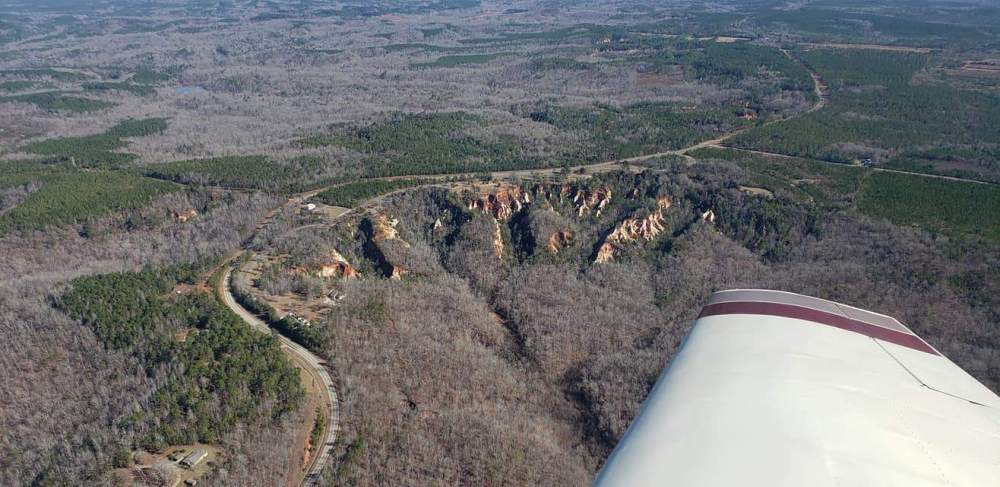

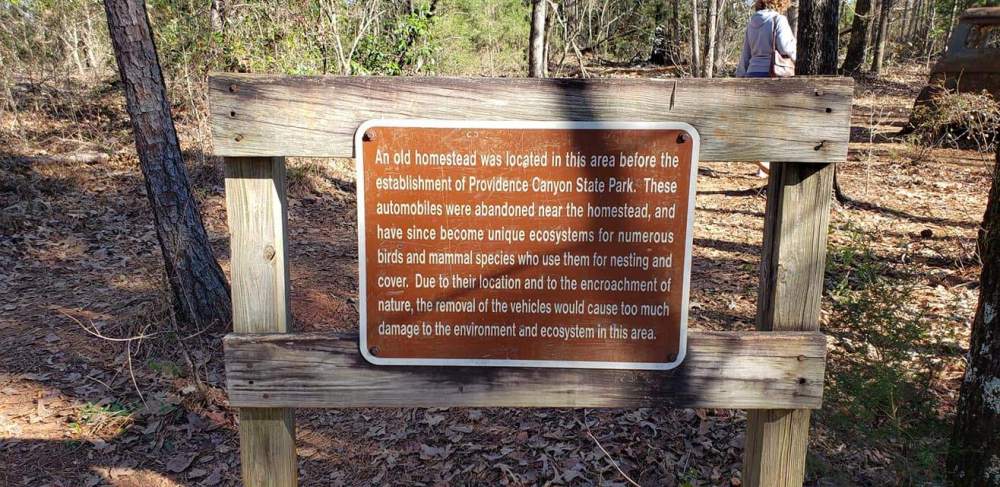

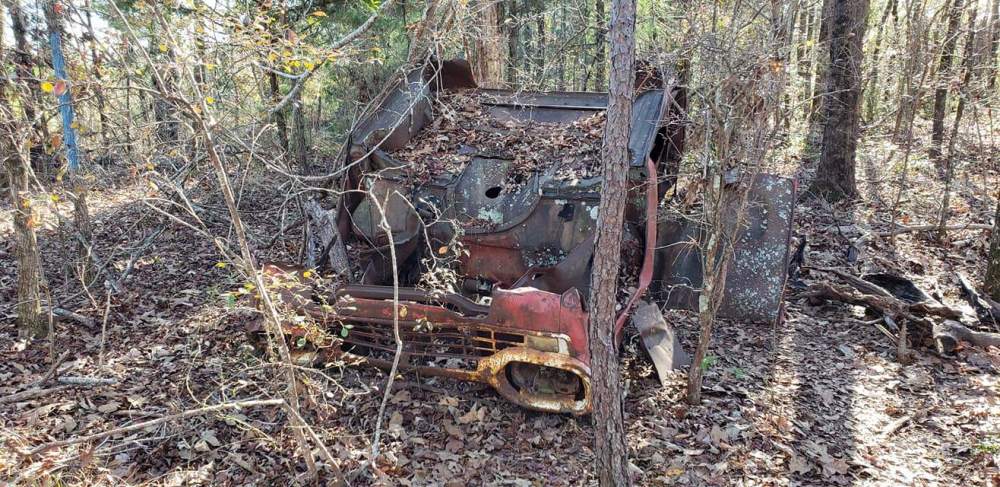
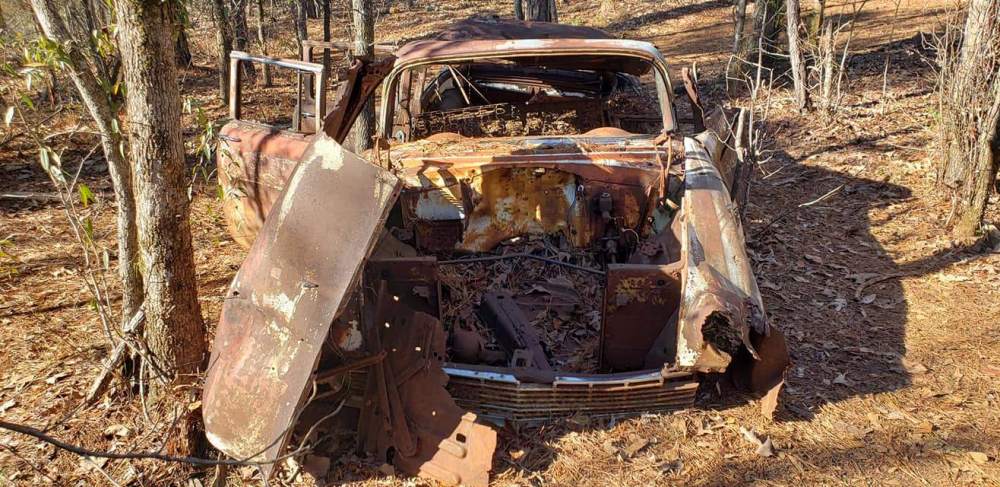

.thumb.jpg.021ca2d2c8577b398a35e129a02e0083.jpg)





